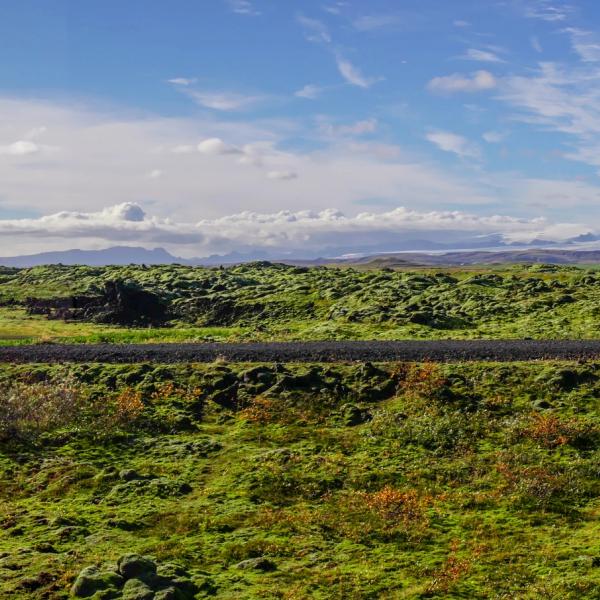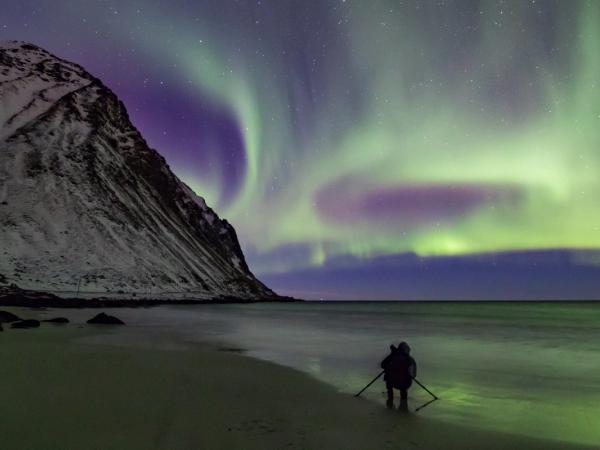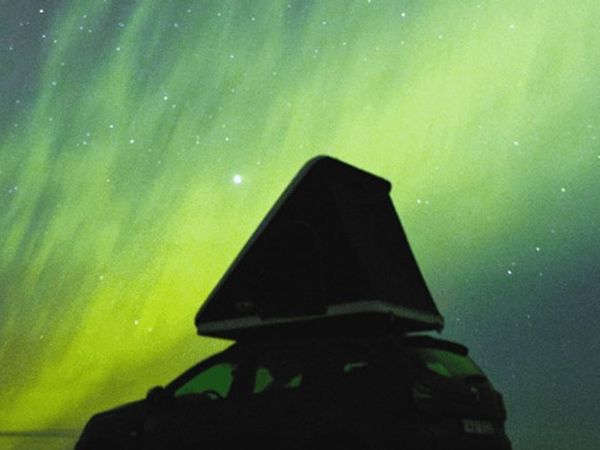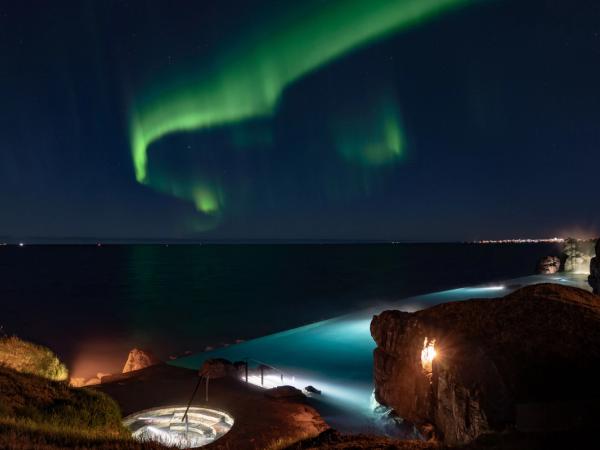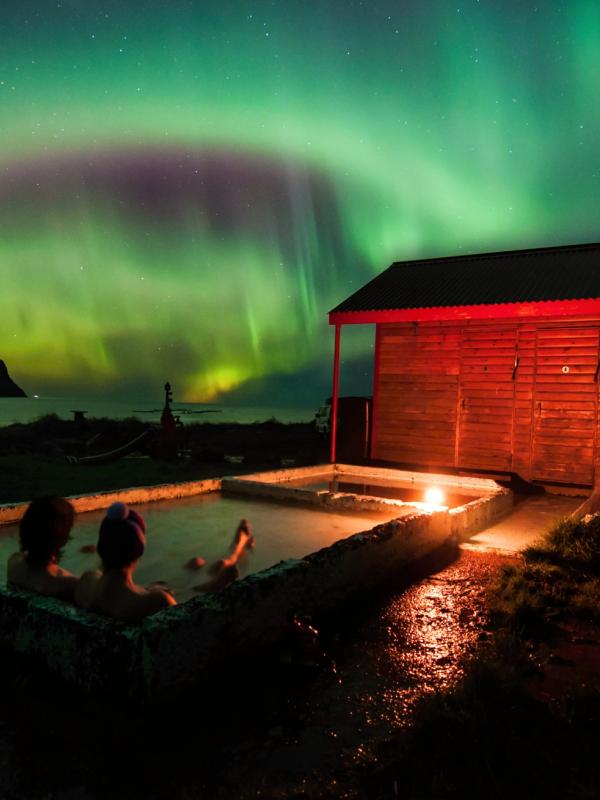
Full Guide: What's the Prime Time to Catch Iceland's Dazzling Northern Lights?
Picture this: green lights dancing across a dark Icelandic sky, shifting and swirling like curtains in the wind. The Northern Lights (Aurora Borealis) are one of nature's most magical displays, and Iceland sits in the perfect spot to see them.
Thanks to its location near the Arctic Circle (around 65°N), Iceland offers some of the best aurora viewing opportunities in the world. But timing is everything. The lights appear when charged particles from the sun hit Earth's magnetic field, creating those famous colored displays - mostly green, but sometimes red or purple too.
I'll guide you through when to visit Iceland for the best Northern Lights experience, with a special focus on the unique advantages of 2025, as well as everything you need to know about daily timing, viewing conditions, and practical tips.
Key takeaways
- Best months: Late September to early April, with January, February, March, and November offering peak viewing conditions
- Best time of day: 11 pm to 1 am for optimal viewing, though lights can appear between 9 pm and 3 am during strong activity
- 2025 will be exceptional for Northern Lights due to solar maximum, increasing frequency and intensity
- Three essential conditions: darkness, clear skies, and high solar activity (Kp index ≥3)
- Plan for multiple nights (5-7 days ideal) to maximize your chances of a sighting
Understanding the Northern Lights
The Northern Lights result from solar particles hitting Earth's magnetosphere, creating those green, red, and purple light shows. Iceland's high latitude makes it perfect for catching this display.
To see the lights, you need three key things: darkness (which is why they're only visible from September to April), clear skies (no clouds blocking your view), and solar activity (measured by the Kp index, with readings of 3 or higher promising good displays).
The further you get from city lights, the better your chances. This is why places like Thingvellir National Park, with minimal light pollution, offer some of the best viewing opportunities.
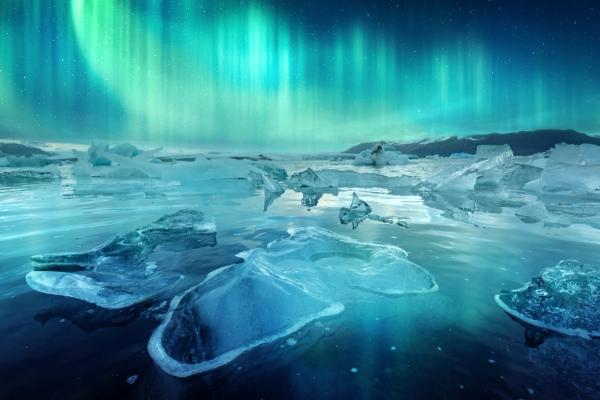
The Best Months to See the Northern Lights in Iceland
The aurora season in Iceland runs from late September through early April, when nights are dark enough to spot these celestial wonders. Each month offers different advantages and challenges for aurora hunters. Here's what to expect during each period to help you plan your trip to Iceland.
September
- Darkness hours: About 12-14 hours
- Pros: Lights start to return, milder weather, fewer tourists, equinox boost
- Cons: Less darkness than winter months, more daylight hours
- Tip: Visit during the latter half of the month for better chances
October
- Darkness hours: About 15 hours
- Pros: Good aurora frequency, still milder conditions, fewer tourists than summer
- Cons: It can be rainy, which affects visibility
- Tip: Check weather forecasts carefully to find clear nights
November
- Darkness hours: 16-18 hours (only 8-10 hours of daylight)
- Pros: Long nights, high visibility, often clear skies
- Cons: The Weather is turning colder
- Tip: Combine with exploring Reykjavik's cozy cafes on cloudy nights
December
- Darkness hours: Maximum darkness with only 4-5 hours of daylight
- Pros: Magical atmosphere around winter solstice (December 21)
- Cons: Often cloudier, popular for Christmas travel
- Tip: Book accommodation well in advance if visiting during holidays
January
- Darkness hours: Up to 20 hours of darkness
- Pros: Peak season, perfect for guided tours, fewer tourists than in December
- Cons: Cold temperatures, some roads might be inaccessible
- Tip: Great month for combining Northern Lights with ice cave tours
February
- Darkness hours: Still very dark, but days slowly lengthening
- Pros: Clear nights are common, strong aurora potential, visible even from urban areas during strong activity
- Cons: Cold weather continues
- Tip: Valentine's Day under the Northern Lights makes for a romantic getaway
March
- Darkness hours: Days noticeably longer but still plenty of darkness
- Pros: Last full month for good viewing, fewer tourists, cheaper flights, equinox advantage
- Cons: Less darkness than mid-winter
- Tip: Book towards the beginning of the month for better chances
April
- Darkness hours: 13.5-16.5 hours
- Pros: Milder weather, combined with spring activities
- Cons: Limited to early April only due to increasing daylight
- Tip: The First week of April is your best bet
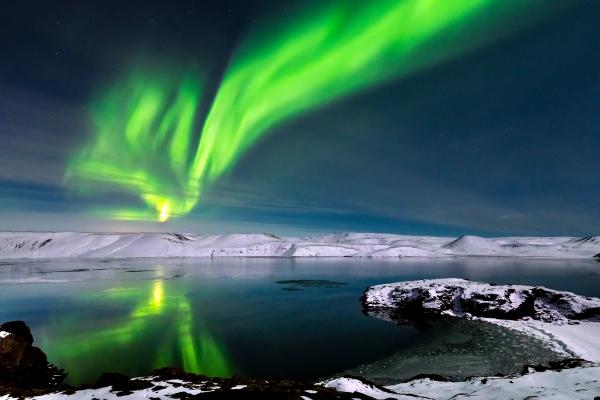
So…What’s the Best Month?
February is generally the best month to see the Northern Lights in Iceland. It offers an ideal combination of long, dark nights and relatively stable weather with many clear evenings. The days have started to lengthen slightly from the December/January darkness, making daytime activities more feasible while still providing excellent night viewing conditions.
January comes in as a close second, offering up to 20 hours of darkness and excellent aurora conditions, though it can have more extreme weather and road closures.
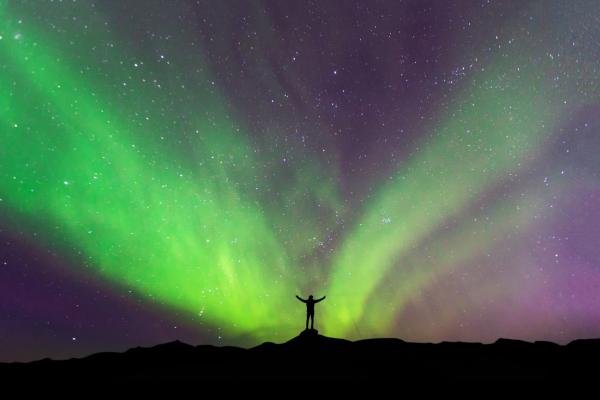
Why Summer Months (May-August) Don't Work
During summer, Iceland experiences the midnight sun phenomenon, with nearly constant daylight. In June and July, the sun barely sets, creating a perpetual twilight that makes aurora viewing impossible. Save your Northern Lights trip for the darker months and visit in summer for Midnight Sun experiences instead.
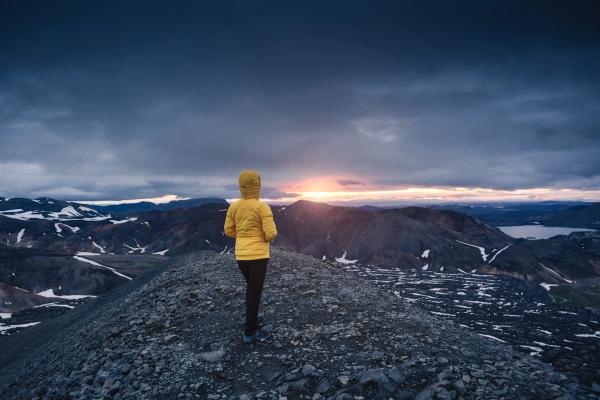
The Best Time of Day to See the Northern Lights
Timing your Northern Lights viewing isn't just about the right month. Specific hours of the night offer better chances too. Understanding these patterns can improve your odds of witnessing a display during your Iceland trip.
Prime Window: 11 pm to 1 am
The optimal time to see the Northern Lights in Iceland is between 11 pm and 1 am. This window offers the best combination of:
- Peak geomagnetic activity: Earth's magnetic field orientation around midnight creates stronger aurora displays
- Maximum darkness: The sky is darkest, enhancing visibility
- Higher Kp index readings: Aurora activity often peaks during these hours
During this time, your chances of seeing vibrant, active displays increase significantly. The Icelandic Meteorological Office shows that Kp index readings of 3 or higher during these hours often result in visible auroras.
Broader Window: 9 pm to 3 am
While 11 pm to 1 am is ideal, the Northern Lights can appear at any time from dusk until dawn. The broader window of 9 pm to 3 am offers good viewing opportunities, especially during:
- Strong geomagnetic storms: During high solar activity (particularly in 2025), auroras may appear earlier and last longer
- Winter months: December and January have such limited daylight that darkness falls early and lasts well into morning
- Clear, moonless nights: When conditions are perfect, aurora displays can continue for hours
I’ve even seen social media posts showing an early evening display (around 8 pm) during a particularly strong geomagnetic storm. This proves that with the right conditions, the lights can appear outside the prime window.
Influencing Factors
Several factors affect what time you might see the lights:
- Moonlight: A full moon creates brighter skies that can wash out fainter auroras. Check the moon phases for 2025: avoid full moon nights (like January 13 or February 12) and aim for new moon periods (around January 29 or February 27) for darker skies.
- Cloud cover: Even during peak hours, clouds can block your view entirely. Use vedur.is to check cloud forecasts alongside aurora predictions.
- Solar activity: A higher Kp index means stronger, more visible auroras that might appear earlier or later than the typical peak times.
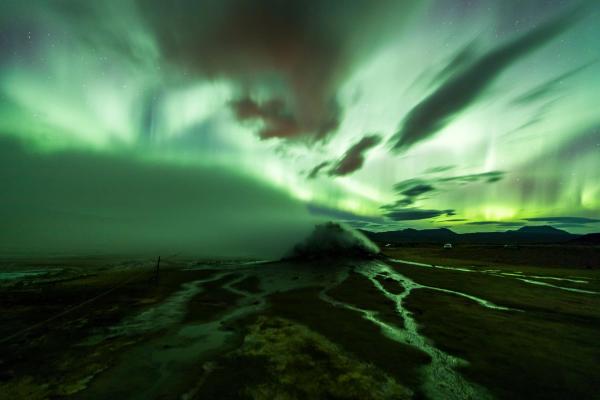
Why 2025 is a Special Year for Aurora Watching
If you've been thinking about seeing the Northern Lights, 2025 presents a good opportunity due to a natural cycle in the sun's activity. This timing makes 2025 an exceptional year for aurora hunters heading to Iceland.
Solar Cycle 25 Maximum
2025 marks a special time in the solar cycle: the solar maximum of Cycle 25. This means:
- The sun is at its most active phase in the 11-year solar cycle
- More sunspots and solar flares occur, sending more charged particles toward Earth
- These particles create more frequent and intense aurora displays
The solar maximum was initially predicted to peak in July 2025 with a sunspot number around 115. However, by August 2024, readings had already hit 156.7, suggesting 2025 will see exceptional aurora activity.
There's also the possibility of a "double peak" similar to what happened in Solar Cycle 24 (which peaked in 2012 and again in 2014). If this occurs, heightened aurora activity could extend throughout 2025 and into 2026.
Impact on Your Viewing Experience
The solar maximum in 2025 means:
- More frequent auroras, potentially visible on more nights
- More vivid displays with brighter colors and more movement
- Possibility of seeing auroras earlier in the evening (from 9 pm) or later (until 3 am)
- Better chances of seeing the lights even with less-than-perfect conditions (like from areas with some light pollution)
If you've been planning an aurora trip to Iceland, 2025 offers a window of opportunity that won't come around again for another 11 years.
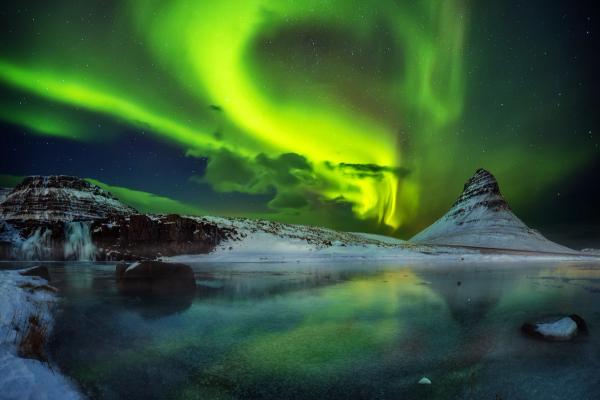
Optimal Viewing Conditions
Even during peak season and the solar maximum, certain conditions need to align for the best Northern Lights experience. Understanding these factors will help you maximize your chances of witnessing this natural phenomenon.
Essential Conditions
For the best Northern Lights experience, you need these four conditions to align:
- Darkness: You need proper darkness, which is why the period from September to April is essential. The darker the sky, the better the contrast with the lights.
- Clear Skies: Cloud cover is the most common reason people miss the Northern Lights. Check vedur.is for cloud cover forecasts. You want less than 4/8 cloud cover for good viewing.
- Low Light Pollution: The further you get from city lights, the better. While strong displays can be visible from Reykjavik (especially during the 2025 solar maximum), rural areas offer much better viewing.
- High Solar Activity: The Kp index measures geomagnetic activity on a scale from 0 to 9. Readings of 3 or higher indicate good aurora potential, while 5+ often results in spectacular displays.
Moonlight also affects visibility. A full moon creates a brighter sky that can wash out fainter auroras, so planning around the moon phases can further improve your chances.
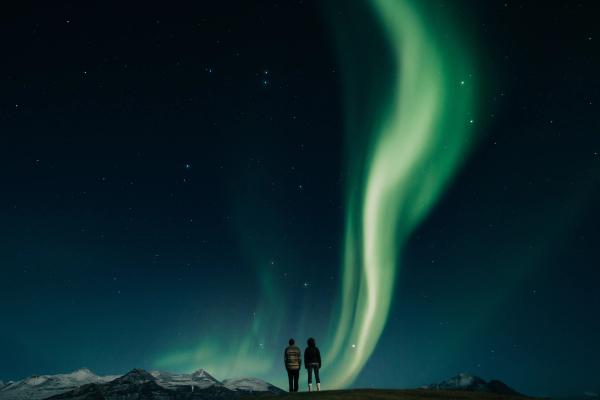
Practical Tips for Your Aurora Adventure
Planning is key to a successful Northern Lights expedition. From tracking forecasts to dressing appropriately, these practical tips will help you make the most of your aurora-hunting adventure in Iceland.
Monitor Forecasts
The Icelandic Meteorological Office website provides detailed aurora and cloud cover forecasts. The My Aurora Forecast app is also excellent for real-time updates. Check both in the early evening to decide whether conditions warrant heading out.
For cloud cover, look at the "Cloud Cover" section on vedur.is - green areas indicate clear skies, which is what you want. For aurora activity, a Kp index of 3 or higher indicates good viewing potential.
Guided Tours
Benefits of joining a guided Northern Lights tour include:
- Expert guides who know the best viewing spots away from light pollution
- Tour companies that monitor forecasts and only run tours when conditions are favorable
- Transportation to optimal locations (tours typically depart at 8:30 pm or 9:30 pm to reach viewing spots by 11 pm)
- Photography assistance and tips for capturing the lights
- Many tours offer free rebooking if you don't see the lights on your first attempt
Popular options include Northern Lights boat tours from Reykjavik harbor and Super Jeep tours that can access remote locations.
Independent Travel
If you prefer to explore on your own:
- Rent a car to chase clear skies (4x4 recommended in winter)
- Use Aurora forecast apps to identify promising areas
- Combine Northern Lights hunting with daytime activities like the Golden Circle, glacier hiking, or the Blue Lagoon.
- Stay in rural hotels or guesthouses away from city lights
Having your own transportation gives you flexibility to move locations if clouds roll in or to stay out later if displays continue past midnight.
Photography Tips
To capture the Northern Lights:
- Bring a camera with manual settings and a tripod (phone cameras have improved but still struggle with night photography)
- Use a wide aperture (f/2.8-f/4), high ISO (1600-3200), and long exposure (5-15 seconds)
- Focus manually to infinity
- Use a remote shutter or timer to avoid camera shake
- Bring extra batteries as cold weather drains them quickly
- Consider joining a photography-focused tour for expert guidance
Photography tours often provide equipment and instruction if you don't have your own gear.
Dress for the Cold
Iceland's winter temperatures can drop to -30°C (-22°F), so proper clothing is essential:
- Layer with thermal base layers, wool mid-layers, and waterproof outer layers
- Don't forget a hat, gloves, and warm socks
- Bring hand warmers and a thermos with hot drinks
- Pack ice grips for your shoes to prevent slips
Remember, you might be standing still for long periods while waiting for the lights, so dress warmer than you think necessary.
Multiple Nights
The Northern Lights are unpredictable, so plan to stay in Iceland for at least 3 nights, preferably 5-7 nights, to maximize your chances. January through March or November offer the best combination of dark skies and potential clear weather.
Having multiple nights available allows you to:
- Wait out cloudy periods
- Take advantage of different locations based on weather patterns
- Catch displays that might vary in intensity from night to night
Conclusion
The Northern Lights in Iceland are a stunning sight, best seen from September to April, with February being the top month due to its long, dark nights and clear skies. The 2025 solar maximum is expected to bring more frequent and vibrant auroras, making it an ideal year to visit. For the best view, aim for clear, moonless nights between 11 pm and 1 am, far from city lights, and check forecasts on Vedur.is or My Aurora Forecast.
Whether you join a guided tour or go on your own, plan for several nights, dress warmly, and be ready to capture the magic of this natural wonder.

